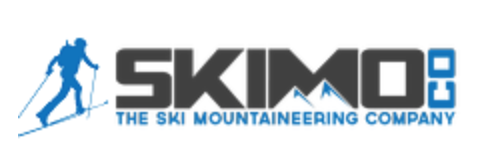Trab Skin Attachment Mod
 Friday, October 28, 2011 at 09:22PM
Friday, October 28, 2011 at 09:22PM It's one thing to carve up your own gear but entirely another to permanently modify someone else's. I recently took a Dremel Tool to a brand new pair of skis which I purchased for a friend last spring. He lives in Europe much of the year and wanted me to pick out and buy a pair of skis for him during one of the end-of-the-season sales we have in Jackson. So, I found a pair of sweet Trab Stelvios for about 40% off. Although nice right out of the box, they still needed some refinement.
As a professional athlete, my friend has about two and half months each fall/early winter to cross train before his season starts. He likes to fill these days with climbing and skiing outings. Since I'm advising him on his skiing equipment, I also get to influence him in terms of style. Being the skimo snob that I am, I decided that he would be well-served to set his skis up with skins that bungee off the tip like skimo race skis. I have done this to my whole quiver and have been happy. It makes for simple and fast transitions.
Not all skis come set up for this so it takes some nerve and a steady hand to modify the boards appropriately. So, there I was, Dremel in hand, a beautiful pair of hand-made Italian skis in front of me ready to take the leap. Gulp.
I'm a big fan of Dynafit's Speed Skin rubber pull tab so I decided to set these skis up with those skins in mind. I simply clamped a Broad Peak on top of the Stelvio and traced the inner diameter of the slot on the tip with a Sharpie.
Next, I drilled a small pilot hole dead center of the widest part of the slot. I followed this with a larger diameter bit that was slightly smaller than the stock size hole on my Broad Peaks. Going smaller allowed me to refine the hole size with a burr at the end.
The Trabs have a full wrap-around edge so I used a cutting wheel to get through the steel before slicing through the softer wood and fiberglass. I then used a burr to finish and smoothen the slot and hole. Repeat size testing with one of my Speed Skins assured me the sizing was right.
Once both skis were cut, I finished and sealed the slot edges with epoxy.
This is about the fifth pair of skis I've done this to and each one has gotten progressively cleaner. I'm glad I had a few under my belt before stepping up for someone else's boards. But the finished product is clean and I think he's going to be psyched. As a bonus, he has a unique pair of skis and a set-up that will allow him to annoy his partners with World Cup quality transitions. I've corrupted another one. - Brian
 Brian |
Brian |  4 Comments |
4 Comments |  Dynafit,
Dynafit,  Trab,
Trab,  gear mods,
gear mods,  ski mountaineering,
ski mountaineering,  skimo racing in
skimo racing in  Gear
Gear 





Reader Comments (4)
Thank you, this is very helpful. I did not initially dare drilling in my new skis, but after reading this article I felt confident enough. And the result seems very good.
I however did the cut slightly on the side, though, as I have seems this on other skis and was worried the tip of the skis, if cut off, would offer less resistance against possible shocks. Also, my steel edge are not full-around and have a slight gap a few centimeters away from the tip, which I used to cut.
Many thanks again for sharing.
Hey Romain,
Thanks for reading. Glad this helped. I've continued to do this multiple times and I have not been disappointed yet. I no longer trace but simply center punch a drill hole about 1.2cm down from the end of the ski and then cut the slot to the edge. I recently did this to my DPS Pure 112 and Volkl V-Werks BMT 94, both of which are pricey skis. So fun!
What diameter drill bit did you finish with? I have my tips drilled to ¼ in, and I want to know if I should drill it out to a larger size for the dynafit tips.
Hi Ted,
Thanks for reading. Yep, 1/4" is good. I need to update that post as it's sort of old but still relevant. I did another one on skins that includes the instructions again with more detail.
http://www.skimolife.com/journal/2015/10/19/the-essential-climbing-skin.html